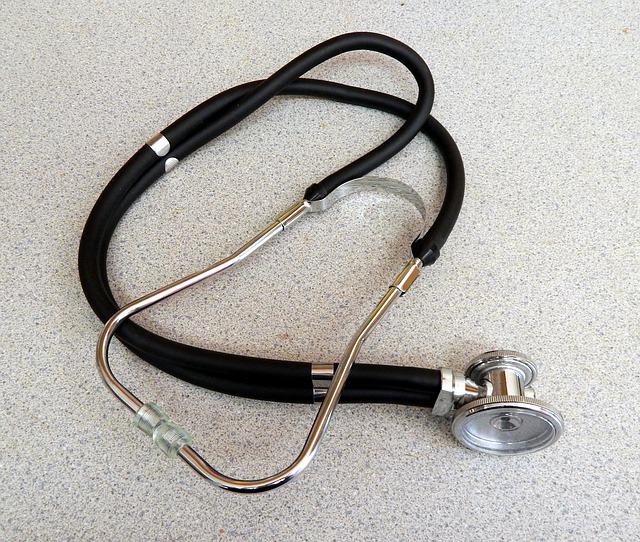
Healthcare jobs remain booming, despite current economic conditions. Many healthcare jobs are in demand. Employers are always seeking new employees. Not only do these professionals help people, but they also enjoy a stable income. Are you interested in a career within the medical field? Continue reading to learn how you can start. It's never too early to start your healthcare career.
Nurse practitioners
A nurse practitioner can have many advantages. They can easily move around without losing their salary and rank. If you are interested in other career options, you might have to start again. You may not have the same duties that a doctor, which is why they are highly sought after. These benefits make nursing an attractive career option. These are just a few of the many benefits that come with becoming a nurse practitioner. These professionals have a rewarding career that can lead to a satisfying lifestyle.
Occupational therapists
Job opportunities for occupational therapists are on the rise, with job growth projected to reach 27 percent by 2024. This is a higher rate than the national average and corresponds to 30 000 new job openings. As the baby boomer generation approaches retirement, there is also a strong need for occupational therapists to help these older individuals manage everyday activities. Occupational therapists can also specialize in a particular area, such as pediatrics or gerontology.

Managers in clinical informatics
Clinical informatics managers oversee the daily operations of clinical information systems in health care facilities. They ensure compliance with regulatory standards by supervising the budget and staff. To become a clinical informatics manager, you must have experience working in an informatics position at a lower level, such as nursing informatics. After gaining experience in an informatics role, you may be able to move up to a managerial role.
Workers in home health care
As the baby boomers age, so does the need for home health aides. More than 19 million people will require some form of assistance by 2050. Not only is there a growing need for home health care but also the increase in elderly citizens. This is good news in the health care sector, but it creates difficult work situations for people who want home-based employment.
Registered nurses
Registered nurses are in high demand. This means that registered nurses' jobs will grow faster than the average. Between 2014-2024, registered nurse positions are projected to grow 25.9%. This is more than the average rate for all occupations. Many registered nurses have great prospects for advancement and job fulfillment, so it is a good time to begin a nursing career. Here are some things to consider when choosing a nursing career:

FAQ
Which are the top 10 foods you should eat?
These are the 10 best foods you can eat:
-
Avocados
-
Berries
-
Broccoli
-
Cauliflower
-
Eggs
-
Fish
-
Grains
-
Nuts
-
Oats
-
Salmon
How does an anti-biotic work?
Antibiotics kill harmful bacteria. Antibiotics are used for treating bacterial infections. There are many types and brands of antibiotics. Some are administered topically, while others can be taken orally.
People who have been infected with certain germs may need antibiotics. If someone has chicken pox, they might need to take an oral antibiotic in order to prevent shingles. Penicillin might also be administered to someone with strep throat. This will help prevent the possibility of developing pneumonia.
Doctors should prescribe antibiotics to children. Children are at greater risk of developing side effects from antibiotics than adults.
Diarrhea, the most common side-effect of antibiotics, is probably diarrhea. Other possible side effects include diarrhea, nausea and vomiting, allergy reactions, dizziness, dizziness, stomach cramps, nausea, vomiting or allergic reactions. Most of these symptoms disappear after the treatment is completed.
What should you eat?
You should eat lots of vegetables and fruits. They provide vitamins and minerals to keep your immune system strong. Vegetables and fruits are high in fiber which helps to digest and fill you up. Try to include at least five servings of fruit and veg per day.
Drink plenty of water. Water flushes toxins from your body and helps you feel full between meals. Drink about eight glasses each day.
Refined grains should be replaced with whole grains. Whole grains have all the nutrients they need, including B vitamins. Refined grains are stripped of some of their nutritional value.
Avoid sugary drinks. Sugary drinks are full of empty calories and lead to obesity. Instead, you can opt for water or milk, as well as unsweetened herbal teas.
Avoid fast food. Fast food is low in nutritional value. It may taste great but it won't give you the energy you need to function properly. Use healthier options, such as soups, sandwiches, salads, and pasta.
Reduce your alcohol intake. Alcohol can lead to poor nutrition and empty calories. Limit yourself to no more than two alcoholic beverages a week.
Red meat consumption should be reduced. Red meats can be high in cholesterol and saturated fat. Opt for lean cuts of beef, pork, lamb, chicken, fish, and turkey instead.
How much should my body weight be for my height? BMI chart & calculator
To determine how much weight loss you need, a BMI calculator is your best friend. Healthy BMI ranges between 18.5 to 24.9. Aim to lose 10 pounds per month if your goal is to lose weight. To calculate your BMI, simply enter your height and weight into the BMI calculator.
This BMI chart can help you find out if or not you are obese.
Here are 7 ways to live a healthy lifestyle.
-
Make sure you eat right
-
Exercise regularly
-
Sleep well
-
Drink lots of water
-
Get adequate rest
-
Be happy
-
Smile often
What is the difference between fat and sugar?
Fat can be a source of energy that is obtained from food. Sugar is a sweet, naturally occurring substance in fruits and vegetables. Both fats as well as sugars contain the same amount of calories. But fats are twice as calories as sugars.
Fats can be stored in the body, which can lead to obesity. They may cause cholesterol buildup and lead to strokes or heart attacks.
Sugars are quickly absorbed into the body and provide instant fuel. This causes blood sugar levels to rise. High blood glucose levels are dangerous as it can increase the likelihood of developing type 2 diabetes.
What is the problem of BMI?
BMI stands for Body Mass Index, which is a measurement of body fat based on height and weight. The following formula is used to calculate BMI:
Divide the weight in kilograms by the height in meters squared.
The result is expressed as a number from 0 to 25. A score greater than 18.5 is considered overweight. A score greater than 23 is considered obese.
A person who is 100 kg in weight and 1.75m in height will have a 22 BMI.
Statistics
- According to the 2020 Dietary Guidelines for Americans, a balanced diet high in fruits and vegetables, lean protein, low-fat dairy and whole grains is needed for optimal energy. (mayoclinichealthsystem.org)
- The Dietary Guidelines for Americans recommend keeping added sugar intake below 10% of your daily calorie intake, while the World Health Organization recommends slashing added sugars to 5% or less of your daily calories for optimal health (59Trusted (healthline.com)
- WHO recommends reducing saturated fats to less than 10% of total energy intake; reducing trans-fats to less than 1% of total energy intake; and replacing both saturated fats and trans-fats to unsaturated fats. (who.int)
- In both adults and children, the intake of free sugars should be reduced to less than 10% of total energy intake. (who.int)
External Links
How To
What does the term "vitamins" mean?
Vitamins can be described as organic compounds found in food. Vitamins are essential for our bodies to absorb nutrients from the foods we eat. Vitamins cannot be made by the body; they must be taken from food.
There are two types: water-soluble and fat-soluble vitamins. Water-soluble vitamins dissolve readily in water. Vitamin C,B1(thiamine), B2 (2riboflavin), and B3 (3niacin), as well as vitamin C,B1, B2 (riboflavin), and B3 (niacin), vitamin B6 (pyridoxine), vitamin folic acid (biotin), pantothenic, and choline are examples. The liver and fat soluble vitamins are stored within the liver and in fatty tissue. Examples include vitamin D, E, K, A, and beta carotene.
Vitamins can be classified by their biological activity. There are eight major vitamin groups:
-
A - Vital for normal growth and maintaining good health.
-
C - essential for nerve function and energy generation.
-
D – Essential for healthy teeth, bones and joints
-
E - needed for good vision and reproduction.
-
K - Required for healthy nerves and muscles.
-
P – vital for building strong bones.
-
Q - aids digestion and absorption of iron.
-
R is required for the production of red blood cells.
The recommended daily intake (RDA), of vitamins varies with age, gender and physical condition. The U.S. Food and Drug Administration has established the RDA values.
For adults over 19 years, the RDA is 400 mg per day for vitamin A. Because it is essential for the development of the fetus, pregnant women should consume 600 micrograms per daily. Children ages 1-8 require 900 micrograms per day. Children under 1 year old require 700 micrograms daily, while infants over one year old need 500 micrograms every day. This decreases between 9 and 12 months.
Children aged 1-18 years need 800 micrograms daily, while children overweight require 1000 micrograms per days. Children who are severely obese or underweight will need 1200 micrograms each day.
Children 4-8 years old who have anemia must consume 2200 micrograms of Vitamin C daily.
2000 micrograms are required daily for good health in adults over 50. Mothers who are pregnant, nursing, or have a high nutrient need will require 3000 micrograms a day.
Adults over 70 need 1500 micrograms daily, as they lose 10% of their muscle every ten years.
Women who are pregnant or nursing need more than the RDA. Pregnant women require 4000 micrograms daily during pregnancy, and 2500 micrograms every day after birth. Breastfeeding mothers need 5000 micrograms per day when breast milk is being produced.